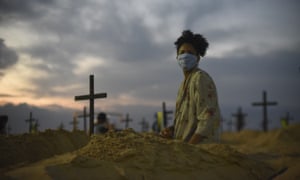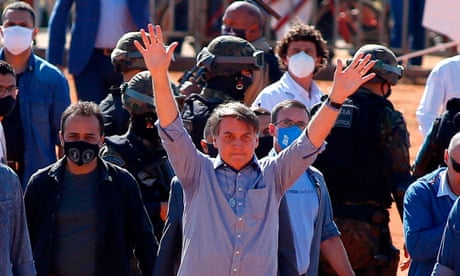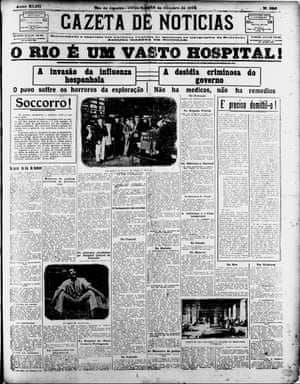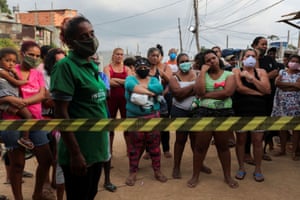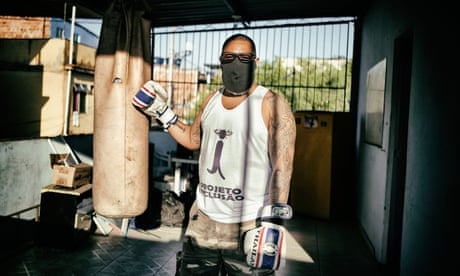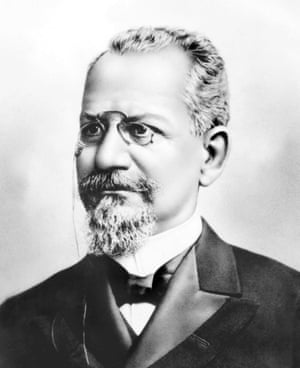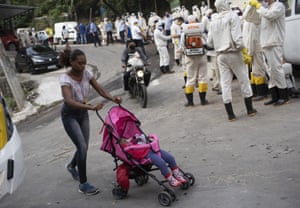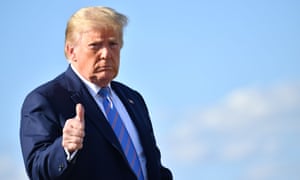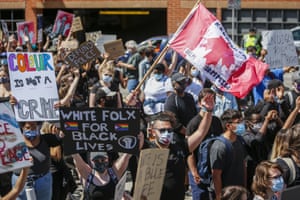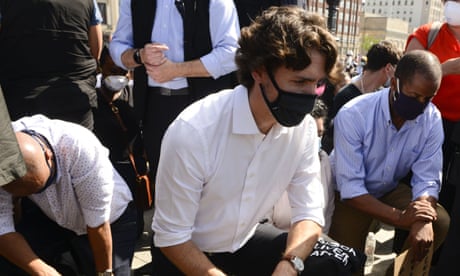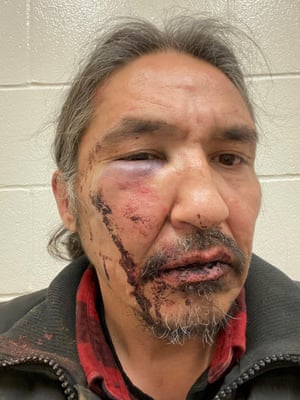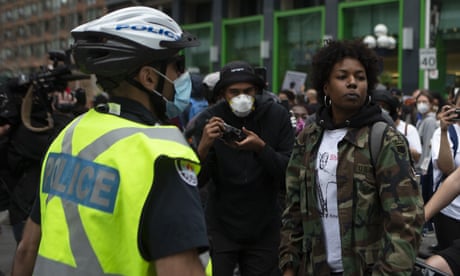Trial of journalists to deliver 'existential moment' in Philippines
Editor of news website Rappler could face prison if convicted under ‘cyber libel’ law
Rebecca Ratcliffe South-east Asia correspondent
Sun 14 Jun 2020 13.03 BSTLast modified on Sun 14 Jun 2020 19.30 BST

Rappler’s editor, Maria Ressa, could face up to 12 years in prison if convicted.
Photograph: Aaron Favila/AP
A verdict will be issued on Monday following the controversial trial of one of the Philippines’ most prominent journalists, in a case widely condemned as an attack on press freedom under Rodrigo Duterte.
A court in Manila will issue a verdict on Rappler, one of the country’s most influential news websites, its editor, Maria Ressa, and former researcher and writer Reynaldo Santos Jr on Monday. Ressa, who was arrested last year on charges of “cyber libel” for a story published by Rappler in 2012, has described the allegations as baseless.
Both Ressa and Rappler – which has exposed corruption, extrajudicial killings and online troll armies – have faced a series of charges over the past year. Most of the claims relate to allegations over the news site’s finances.
The arrest of Ressa prompted the United Nations high commissioner for human rights to warn in February 2019 that there appeared to be “a pattern of intimidation” of independent media in the Philippines. Duterte has dismissed Rappler as fake news.
The site has closely scrutinised his administration, including the brutal anti-drugs campaign that the UN recently warned had led to “widespread and systematic” extrajudicial killings. Government figures indicate at least 8,663 people have been killed in the crackdown; other estimates put the toll at triple that number.
Ressa has described the approaching verdict as “an existential moment” for democracy in the country, where there are major concerns about shrinking democratic rights.
Just last month, the country’s biggest broadcaster, ABS-CBN, was forced off air by a cease-and-desist order that was condemned as a brazen attempt to muzzle the media. Meanwhile a new anti-terrorism act has been recently passed by lawmakers, allowing warrantless arrests, weeks of detention without charge and other powers that rights groups fear could be used against government critics.
Media freedom in the Philippines has deteriorated under Duterte, and the country now ranks 136th out of 180 countries on the Reporters Without Borders (RSF) World Press Freedom Index. On top of the use of trumped-up legal charges against journalists, its analysis cited threats of violence against reporters and online harassment campaigns waged by pro-Duterte troll armies.
If found guilty on Monday, Ressa and Santos could face up to 12 years in prison. Another of the most prominent critics of Duterte’s narco war, Senator Leila de Lima, has been in jail for three years over drug allegations that she says are politically motivated.
The cyber-libel charge against Rappler relates to a story published on the website in May 2012 that alleged ties between a Philippine businessman, Wilfredo D Keng, and a high court judge.
The case was first brought in 2017, and initially dismissed by the National Bureau of Investigation because it was outside the statute of limitations. But in 2018 the justice department allowed the case to proceed to trial, extending the liability period for such cases from one to 12 years.
Ressa and her legal counsel point out that the controversial cyber-libel law did not exist at the time of publication, and was in fact only enacted four months after the story was written. However, the justice department allowed the case to go ahead because the online article had been updated in February 2014 to correct a spelling error.
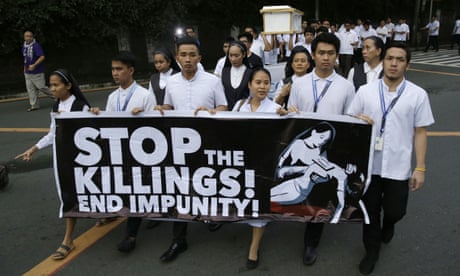
Philippines war on drugs may have killed tens of thousands, says UN
https://www.theguardian.com/world/2020/jun/04/philippines-police-may-have-killed-tens-of-thousands-with-near-impunity-in-drug-war-un
A verdict will be issued on Monday following the controversial trial of one of the Philippines’ most prominent journalists, in a case widely condemned as an attack on press freedom under Rodrigo Duterte.
A court in Manila will issue a verdict on Rappler, one of the country’s most influential news websites, its editor, Maria Ressa, and former researcher and writer Reynaldo Santos Jr on Monday. Ressa, who was arrested last year on charges of “cyber libel” for a story published by Rappler in 2012, has described the allegations as baseless.
Both Ressa and Rappler – which has exposed corruption, extrajudicial killings and online troll armies – have faced a series of charges over the past year. Most of the claims relate to allegations over the news site’s finances.
The arrest of Ressa prompted the United Nations high commissioner for human rights to warn in February 2019 that there appeared to be “a pattern of intimidation” of independent media in the Philippines. Duterte has dismissed Rappler as fake news.
The site has closely scrutinised his administration, including the brutal anti-drugs campaign that the UN recently warned had led to “widespread and systematic” extrajudicial killings. Government figures indicate at least 8,663 people have been killed in the crackdown; other estimates put the toll at triple that number.
Ressa has described the approaching verdict as “an existential moment” for democracy in the country, where there are major concerns about shrinking democratic rights.
Just last month, the country’s biggest broadcaster, ABS-CBN, was forced off air by a cease-and-desist order that was condemned as a brazen attempt to muzzle the media. Meanwhile a new anti-terrorism act has been recently passed by lawmakers, allowing warrantless arrests, weeks of detention without charge and other powers that rights groups fear could be used against government critics.
Media freedom in the Philippines has deteriorated under Duterte, and the country now ranks 136th out of 180 countries on the Reporters Without Borders (RSF) World Press Freedom Index. On top of the use of trumped-up legal charges against journalists, its analysis cited threats of violence against reporters and online harassment campaigns waged by pro-Duterte troll armies.
If found guilty on Monday, Ressa and Santos could face up to 12 years in prison. Another of the most prominent critics of Duterte’s narco war, Senator Leila de Lima, has been in jail for three years over drug allegations that she says are politically motivated.
The cyber-libel charge against Rappler relates to a story published on the website in May 2012 that alleged ties between a Philippine businessman, Wilfredo D Keng, and a high court judge.
The case was first brought in 2017, and initially dismissed by the National Bureau of Investigation because it was outside the statute of limitations. But in 2018 the justice department allowed the case to proceed to trial, extending the liability period for such cases from one to 12 years.
Ressa and her legal counsel point out that the controversial cyber-libel law did not exist at the time of publication, and was in fact only enacted four months after the story was written. However, the justice department allowed the case to go ahead because the online article had been updated in February 2014 to correct a spelling error.

Philippines war on drugs may have killed tens of thousands, says UN
https://www.theguardian.com/world/2020/jun/04/philippines-police-may-have-killed-tens-of-thousands-with-near-impunity-in-drug-war-un
In total, Rappler and its officers and staff have faced at least 11 government investigations and court cases. Ressa has won international plaudits for her journalism and refusal to be cowed by what rights groups have described as judicial harassment. She was among those named Time person of the year in 2018, and won the 2018 Knight International Journalism award as well as a press freedom award given by the Committee to Protect Journalists.
Monday’s verdict will be issued at a court in Manila where a limited number of people will be present as part of ongoing measures to reduce coronavirus transmission.
Judge Rainelda Estacio-Montesa finished the trial in just eight months, far more quickly than other recent libel cases. The verdict can be appealed against in the supreme court.
Monday’s verdict will be issued at a court in Manila where a limited number of people will be present as part of ongoing measures to reduce coronavirus transmission.
Judge Rainelda Estacio-Montesa finished the trial in just eight months, far more quickly than other recent libel cases. The verdict can be appealed against in the supreme court.


